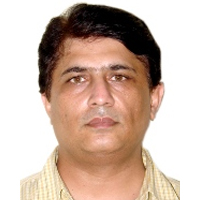Aortic dissection causing 2 myocardial infarctions
Published on: 16th December, 2019
OCLC Number/Unique Identifier: 8488779776
A 56-year-old man was admitted to our hospital because of sudden onset of right-sided thoracic pain. The ECG showed inferior ST segment elevations. He has been treated with aspirin, clopidogrel, unfractionated heparin and tenecteplase, and his symptoms resolved after 30 minutes. About half an hour later, the patient developed again left-sided thoracic pain and the signs of an anterior myocardial ST-segment elevation infarction. 90 minutes after receiving the initial medications, the performed coronary angiography revealed a long dissection of a large ramus circumflexus. Furthermore, the left anterior descending coronary artery was occluded at about the mid-level. The left ventriculography showed a reduced ventricular function and a Stanford type A aortic dissection. Immediate patient transfer for emergency surgical intervention was arranged. However, ventricular fibrillation occurred during transport and he required endotracheal intubation and prolonged cardiopulmonary resuscitation. Unfortunately, he died during further transport.
In a patient with massive thoracic pain of initially uncommon localization in combination with fluctuation of ST-segment elevations, aortic dissection should be seriously taken into the differential diagnosis as well as into therapeutic management decisions (in particular antiplatelet and thrombolytic therapy).
Comparative Hemodynamic Evaluation of the LUCAS® Device and Manual Chest Compression in Patients with Out-of-Hospital Cardiac Arrest
Published on: 19th April, 2017
OCLC Number/Unique Identifier: 7317598668
Chest compression is the fundamental technique in cardiopulmonary resuscitation (CPR) in patients with cardiac arrest [1]. The quality and the early implementation of CPR are essential to improve the prognosis and the chances of restoring spontaneous circulation. In the literature, there are some articles about the poor quality of chest compression [2-4]. Therefore chest compression is as crucial as alerting the emergency services or early defibrillation in the survival chain. In accordance with the guidelines, chest compressions have to be performed continuously to improve the outcome [5]. However, the efficacy of manual chest compression diminishes over time with the fatigue of the provider (which appears within minutes of starting the procedure), and is impaired during transportation manoeuvres, which expose patients to unforeseen interruptions and a deterioration in the quality du massage in terms of power and rhythm. The efficacy of manual chest compression has been reported to fall by 20% per minute [6,7]. Mechanical chest compression overcome this problem of operator fatigue by ensuring constant efficacy in terms of both quality and quantity. Even though current data show no difference between manual chest compression and automated systems in terms of survival, haemodynamic studies in animal models have shown that mechanical techniques are more effective [8].
Mouth-to-mouth ventilation through cardiopulmonary resuscitation, is there any other way?
Published on: 29th November, 2021
OCLC Number/Unique Identifier: 9359436628
Objective: to provide and explore possibility of new idea that perform mouth-to-mouth ventilation through cardiopulmonary resuscitation. Methods: stage one was establishing the ventilation technique using cola bottles, stage two was measuring the tidal volume when different sized cola bottles were used. Result: the smallest sized cola bottle (500 ml) could also make obvious thorax rise in manikin CPR model. The tidal volume was 174.5 ± 9.1 ml, 220 ± 7.6 ml and 447 ± 15.9 ml respectively for 500 ml, 600 ml and 1.25 L cola bottles when using single hand performance. There were statistical differences (0.001) in tidal volume of different sized cola bottle by using one hand performance and two hands. Conclusion: Larger sized cola bottles (600 ml, 1.25 L) could be used as substitute ventilation technique for mouth-to-mouth ventilation in special circumnutates.
















